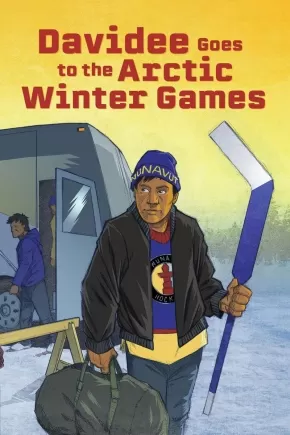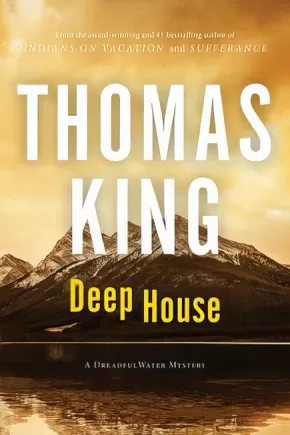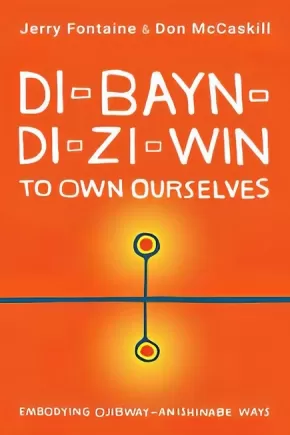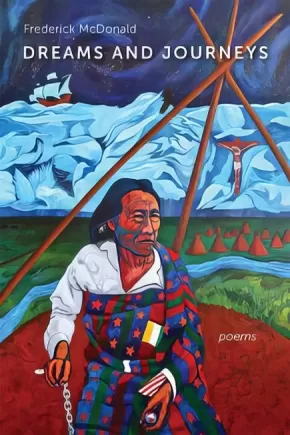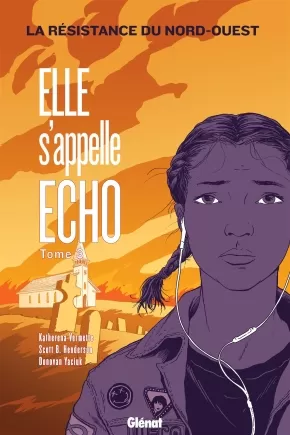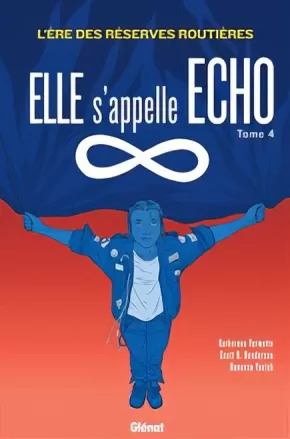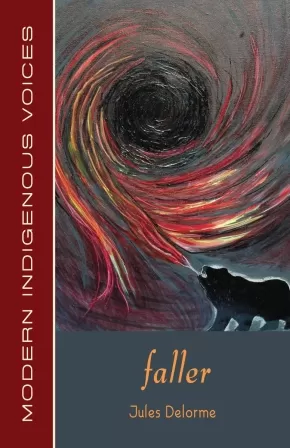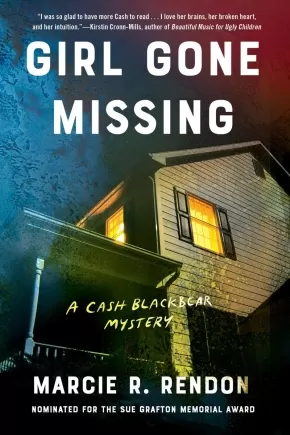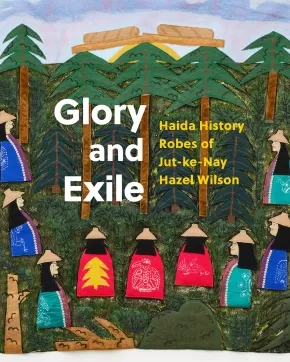
Teen Books
406
-
420
of
1617 Results;
Sort By
Go To
of 108
Call Me Indian: From the Trauma of Residential School to Becoming the NHL's First Treaty Indigenous Player
$21.00
Format:
Paperback
Text Content Territories:
Indigenous Canadian; First Nations; Cree (Nehiyawak); Plains Cree; Ahtahkakoop Cree Nation;
Reading Level: N/A
ISBN / Barcode: 9780735240032
Synopsis:
Synopsis:
Trailblazer. Residential school Survivor. First Treaty Indigenous player in the NHL. All of these descriptions are true--but none of them tell the whole story.
Fred Sasakamoose, torn from his home at the age of seven, endured the horrors of residential school for a decade before becoming one of 120 players in the most elite hockey league in the world. He has been heralded as the first Indigenous player with Treaty status in the NHL, making his official debut as a 1954 Chicago Black Hawks player on Hockey Night in Canada and teaching Foster Hewitt how to pronounce his name. Sasakamoose played against such legends as Gordie Howe, Jean Beliveau, and Maurice Richard. After twelve games, he returned home.
When people tell Sasakamoose's story, this is usually where they end it. They say he left the NHL to return to the family and culture that the Canadian government had ripped away from him. That returning to his family and home was more important to him than an NHL career. But there was much more to his decision than that. Understanding Sasakamoose's choice means acknowledging the dislocation and treatment of generations of Indigenous peoples. It means considering how a man who spent his childhood as a ward of the government would hear those supposedly golden words: "You are Black Hawks property."
Sasakamoose's story was far from over once his NHL days concluded. He continued to play for another decade in leagues around Western Canada. He became a band councillor, served as Chief, and established athletic programs for kids. He paved a way for youth to find solace and meaning in sports for generations to come. Yet, threaded through these impressive accomplishments were periods of heartbreak and unimaginable tragedy--as well moments of passion and great joy.
This isn't just a hockey story; Sasakamoose's groundbreaking memoir sheds piercing light on Canadian history and Indigenous politics, and follows this extraordinary man's journey to reclaim pride in an identity and a heritage that had previously been used against him.
Reviews
“Fred Sasakamoose played in the NHL before First Nations people had the right to vote in Canada. This page turner will have you cheering for “Fast Freddy” as he faces off against huge challenges both on and off the ice—a great gift to every proud hockey fan, Canadian, and Indigenous person.”—Wab Kinew, Leader of the Manitoba NDP and author of The Reason You Walk
“Call Me Indian needs to be in every library and on every school curriculum in Canada. Fred Sasakamoose’s story is gripping and powerfully told—a story of triumph and tragedy, of great success and the perils of excess. There is laughter and tears here aplenty, but also inspiration. Characters as large as Gordie Howe and Bobby Hull are easily matched by the likes of Moosum, Freddy’s grandfather; Father Roussel, the only good to be found in residential school; George Vogan, who always believed in Fred—and Loretta, who loved him, gave him family, and ultimately saved him.”—Roy MacGregor, bestselling author of Chief: The Fearless Vision of Billy Diamond and Canadians: Portrait of a Country
Additional Information
288 pages | 5.20" x 7.94" | 8 pp 4/c photo insert
Meg Masters assisted Fred in writing his memoir. She is a Toronto-based writer and editor who has worked with many bestselling Canadian authors.
Creeboy
$16.95
Format:
Paperback
Text Content Territories:
Indigenous Canadian;
ISBN / Barcode: 9781459416789
Synopsis:
Synopsis:
In the literary tradition of The Outsiders comes a coming-of-age novel about teen boys and Indigenous gangs.
Sixteen-year-old Josh is no stranger to gang life. His dad, the leader of the Warriors, a gang on their reserve, is in jail, and Josh’s older brother has taken charge.
Josh’s mom has made it clear the Warriors and their violence aren’t welcome in her home — Josh’s dad and brother included. She wants Josh to focus on graduating high school. Josh is unsure whether gang life is for him — that is until gang violence arrives on his doorstep.
Turning to the Warriors, Josh, now known as “Creeboy,” starts down the path to becoming a full gang member — cutting himself off from his friends, family and community outside the gang.
It’s harder than ever for Creeboy to envision a different future for himself. Will anything change his mind?
Educator Information
Interest ages 13 to 18.
Written for reluctant readers.
Fry Reading Level: 2.0
Recommended in the Canadian Indigenous Books for Schools resource collection for grades 9 to 12 for English Language Arts.
Content Warning: References death and violence.
Additional Information
128 pages | 5.51" x 8.50" | Paperback
Davidee Goes to the Arctic Winter Games
$15.95
Artists:
Format:
Paperback
Text Content Territories:
Indigenous Canadian; Inuit;
ISBN / Barcode: 9781774505892
Synopsis:
Synopsis:
Davidee has always loved hockey. Lately, though, all he wants to do is play video games. He dreams of playing in the NHL, but how does a kid from Naujaat make the big league?
When Davidee tries out for the Arctic Winter Games and unexpectedly makes the team, he can’t believe his luck. But Davidee is only the backup goalie, and Team Nunavut can’t seem to find their footing. Can Davidee find a way to get the team playing together before the gold medal game?
Educator Information
Recommended for ages 11 to 13.
This is a Hi-Lo book that features an engaging story at an accessible reading level for middle school and high school students.
This book shows the value of working hard, not giving up, and being a good friend and teammate.
Additional Information
72 pages | 6.00" x 9.00"
Deep House
$24.99
Format:
Paperback
Text Content Territories:
Indigenous American; Native American; Cherokee;
Grade Levels: 12; University/College;
ISBN / Barcode: 9781443465618
Synopsis:
Synopsis:
For the first time since the pandemic, Thumps DreadfulWater has finally found some peace in small-town Chinook. Sure, his beloved cat is still missing and his relationship with Claire is more than uncertain, but at least he can relax in the comfort of his home. And now that local businesses are starting to open their doors again, everything can go back to normal.
But when Thumps unintentionally discovers a body at the bottom of a treacherous canyon, he becomes entangled once again in an inexplicable mystery. As more puzzling details come to the surface, Thumps begins to question whom he can truly trust—especially when an unexpected visitor walks back into his life.
In the follow-up to Obsidian, a Globe and Mail Favourite of 2020, Thumps DreadfulWater returns with wit and wry humour to solve a mystery that only Thomas King could create.
Series Information
This book is from the DreadfulWater Mystery series, a mystery/detective series from Thomas King.
Books in this series include:
- Dreadful Water
- The Red Power Murders
- Cold Skies
- A Matter of Malice
- The Obsidian Murders
- Deep House
- Double Eagle
- Black Ice
Additional Information
400 pages | 6.00" x 9.00" | Paperback
Dempsey Bob: In His Own Voice
$45.00
Format:
Hardcover
Text Content Territories:
Indigenous Canadian; First Nations; Dene; Tahltan (Nahanni); Tlingit;
Grade Levels: 12; University/College;
ISBN / Barcode: 9781773271613
Synopsis:
Synopsis:
Dempsey Bob: In His Own Voice is based on the first full-scale solo museum exhibition of this extraordinary Tahltan-Tlingit artist, one of the finest living carvers of the Northwest Coast. Drawing from extensive interviews with the artist by the exhibition’s curator, Sarah Milroy, the book presents the story of his life told his own way, including extensive and intimate reflections on the creation of particular works. Gorgeous photographs of the artworks, which are drawn from key private collections in Canada and public collections in Canada, the US and beyond, are supplemented with material from his sketchbooks to create a vivid portrait of the creative process.
Additional Information
208 pages | 9.00" x 10.00" | Hardcover
Derrière l'histoire du chandail orange
$19.95
Format:
Paperback
Text Content Territories:
Indigenous Canadian; First Nations; Salish; Interior Salish; Secwepemc (Shuswap); Stswecem'c Xgat'tem;
ISBN / Barcode: 9781989122990
Synopsis:
Synopsis:
Derrière l'histoire du chandail orange est un recueil unique en son genre rassemblant les témoignages de Phyllis Webstad et de ses proches. Les lecteurs auront l'occasion d'y prendre intimement connaissance de la vie avant, pendant et après le pensionnat. Dans ce livre, les Survivants et les Survivants intergénérationnels partagent avec nous leurs récits de façon authentique, dans leurs propres mots. Phyllis Webstad est une Survivante des pensionnats et la fondatrice du mouvement de la Journée du chandail orange. Phyllis a sélectionné ces récits avec soin pour permettre aux Canadiens de s'éduquer et de mieux comprendre les effets dévastateurs du système des pensionnats. Ceux et celles qui liront ce livre seront sensibilisés aux nombreux défis auxquels font face bien des peuples autochtones du Canada. Cette prise de conscience s'accompagnera d'un apprentissage et d'un désapprentissage, d'une compréhension et d'une acceptation, qui mèneront à leur tour au changement. Phyllis espère que tous les Canadiens honoreront les vies et les expériences des Survivants et de leurs familles en découvrant ce qui se trouve Derrière l'histoire du chandail orange.
Educator Information
Recommended for ages 12 to 17.
This book is also available in English: Beyond the Orange Shirt Story
Additional Information
116 pages | 6.51" x 8.48" | Paperback
Di-bayn-di-zi-win (To Own Ourselves): Embodying Ojibway-Anishinabe Ways
$24.99
Format:
Paperback
Text Content Territories:
Indigenous Canadian; First Nations; Anishinaabeg; Ojibway;
Grade Levels: 12; University/College;
ISBN / Barcode: 9781459748996
Synopsis:
Synopsis:
A collaboration exploring the importance of the Ojibway-Anishinabe worldview, use of ceremony, and language in living a good life, attaining true reconciliation, and resisting the notions of indigenization and colonialization inherent in Western institutions.
Indigenization within the academy and the idea of truth and reconciliation within Canada have been seen as the remedy to correct the relationship between Indigenous Peoples and Canadian society. While honourable, these actions are difficult to achieve given the Western nature of institutions in Canada and the collective memory of its citizens, and the burden of proof has always been the responsibility of Anishinabeg.
Authors Makwa Ogimaa (Jerry Fontaine) and Ka-pi-ta-aht (Don McCaskill) tell their di-bah-ji-mo-wi-nan (Stories of personal experience) to provide insight into the cultural, political, social, and academic events of the past fifty years of Ojibway-Anishinabe resistance in Canada. They suggest that Ojibway-Anishinabe i-zhi-chi-gay-win zhigo kayn-dah-so-win (Ways of doing and knowing) can provide an alternative way of living and thriving in the world. This distinctive worldview — as well as Ojibway-Anishinabe values, language, and ceremonial practices — can provide an alternative to Western political and academic institutions and peel away the layers of colonialism, violence, and injustice, speaking truth and leading to true reconciliation.
Reviews
"Fontaine and McCaskill write in a way our own Indigenous People can understand and feel; their passion is tangible." — Graham Hingangaroa Smith, Distinguished Professor, Massey University - NZ
"There are multiple ways to inhabit our deepest principles. There are also many ways to honor land and our elders by embodying the teachings of both. Here is life found in kindness, loving, and truth. How do we access healing and how do we share this healing with others? Reading this book is one way. Tears of gratitude are for you both, Jerry Fontaine and Don McCaskill. Mahalo nui no ko ?ike nahenahe. Thank you for this mutual emergence shaped as much by friendship as it is by ?ike kupuna - elder knowledge. What is within these pages are ceremonial gifts offered to all who will take the time to connect with what is inevitable about our collective evolution." — Manulani Aluli Meyer, University of Hawai‘i
Additional Information
328 pages | 6.00" x 9.00" | Paperback
Dreams and Journeys
$22.95
Format:
Paperback
Text Content Territories:
Indigenous Canadian; First Nations; Cree (Nehiyawak); Woodland Cree;
Reading Level: N/A
ISBN / Barcode: 9781990776045
Synopsis:
Synopsis:
From poet and visual artist Frederick McDonald, an illuminating collection that explores the intricacies of existing within two worlds.
Daydreams turn into night dreams that carry the author on a journey of self-awareness and personal discovery while living and travelling in two worlds: that of his reality as a member of the Fort McKay First Nation and existing as part of Canadian culture within its mainstream paradigm of savage stereotypes and ancient archetypes. Wondering at the intricacies of these worlds and what was, what could have been and what could be as his community navigates a myriad of political policies and propaganda, McDonald weaves experiences of injustice and hardship with the glory and beauty of his culture, all while contemplating the endurance of the natural environment amid human destruction.
Reviews
"Frederick McDonald is a master of the poetic image. His people spring to vivid life, loud and colourful in our mind’s eye. We join their dreams and journeys. We come visit. We walk traplines and float in an old canoe. We feel the cold as lazy sled dogs hitch a ride behind a snowmobile. We ride a palomino on our birthday. We share some hot pea soup. We laugh out loud and cry alone. We follow the Raven. We are the better for it." — Therese Greenwood, author of What You Take with You
"Dreams and Journeys is a collection of poetry meant to be shared and read aloud. It is a conversation with Frederick McDonald, where a brown boy tells his story and recounts history. It is a particular narrative based on his life experiences and, simultaneously, a universal tale, so that we are involved in its unfolding. The collection becomes alive when recited… In it, the past is contemporary and open to future possibilities." — Karim-Aly S. Kassam, International Professor of Environmental and Indigenous Studies, Cornell Univer
Additional Information
136 pages | 6.00" x 9.00" | Paperback
Elle s'appelle Echo Tome 3: La résistance du Nord-Ouest
$19.95
Artists:
Format:
Hardcover
Text Content Territories:
Indigenous Canadian; Métis;
ISBN / Barcode: 9782924997284
Synopsis:
Synopsis:
Echo Desjardins est une métisse de 13 ans qui habite Winnipeg, au Manitoba. L'adolescente solitaire, qui vit loin de sa mère, a du mal à s'intégrer à sa nouvelle école. Un jour, lors d'un cours d'histoire donné par monsieur Bee sur la vie des autochtones au début du XIXe siècle, Echo se transporte dans le passé, jusqu'à devenir témoin privilégié de sa propre histoire, l'histoire méconnue des Métis du Canada.
Elle s'appelle Echo est une série à dimension humaine, qui à travers la recherche d'identité d'une jeune Métisse, permet de découvrir ces descendants d'Européens et Autochtones qui se sont battus, et sacrifiés, pour écrire une page importante de l'histoire du Canada.
Tome 3 : La résistance du Nord-Ouest : Peu à peu, Écho s'intègre à sa nouvelle vie, mais lorsqu'elle retourne dans le passé de son peuple, elle découvre que 1885 est une ère de grands bouleversements. Les bisons ont disparu alors que les colons de l'Est arrivent quotidiennement. Les Métis font face à la faim et à l'incertitude alors que leur mode de vie traditionnel est menacé. Le gouvernement canadien ignore leurs pétitions, mais l'espoir renaît lorsque Louis Riel revient pour les aider…
Educator & Series Information
Recommended for ages 12+.
This is the third book in the Girl Called Echo (Elle s'appelle Echo) series, which includes the following titles:
Elle s'appelle Echo Tome 1: La guerre du Pemmican
Elle s'appelle Echo Tome 2: La résistance de la rivière Rouge
Elle s'appelle Echo Tome 3: La résistance du Nord-Ouest
Elle s'appelle Echo Tome 4: L'ère des réserves routières
This book is available in English: Northwest Resistance
Additional Information
50 Pages | Hardcover
Elle s'appelle Echo Tome 4: L'ère des réserves routières
$19.95
Artists:
Format:
Hardcover
Text Content Territories:
Indigenous Canadian; Métis;
ISBN / Barcode: 9782924997291
Synopsis:
Synopsis:
Echo Desjardins est une métisse de 13 ans qui habite Winnipeg, au Manitoba. L'adolescente solitaire, qui vit loin de sa mère, a du mal à s'intégrer à sa nouvelle école. Un jour, lors d'un cours d'histoire donné par monsieur Bee sur la vie des autochtones au début du XIXe siècle, Echo se transporte dans le passé, jusqu'à devenir témoin privilégié de sa propre histoire, l'histoire méconnue des Métis du Canada.
Elle s'appelle Echo est une série à dimension humaine, qui à travers la recherche d'identité d'une jeune Métisse, permet de découvrir ces descendants d'Européens et Autochtones qui se sont battus, et sacrifiés, pour écrire une page importante de l'histoire du Canada.
Tome 4 : L'ère des réserves routières : Le dernier voyage dans le passé de son peuple a été une terrible épreuve pour Écho. Louis Riel a été exécuté et de nouvelles lois sapent les droits fonciers des Métis tandis que des spéculateurs fonciers sans scrupules en profitent. Echo puise alors dans la force et la résilience de ses ancêtres, forgées à travers les épreuves et les douleurs du passé, pour tenter de s'offrir un avenir triomphant.
Educator & Series Information
Recommended for ages 12+.
This is the fourth book in the Girl Called Echo (Elle s'appelle Echo) series, which includes the following titles:
Elle s'appelle Echo Tome 1: La guerre du Pemmican
Elle s'appelle Echo Tome 2: La résistance de la rivière Rouge
Elle s'appelle Echo Tome 3: La résistance du Nord-Ouest
Elle s'appelle Echo Tome 4: L'ère des réserves routières
This book is available in English: Road Allowance Era
Additional Information
50 Pages | Hardcover
Faller
$19.95
Format:
Paperback
Text Content Territories:
Indigenous Canadian;
Reading Level: N/A
ISBN / Barcode: 9781772311747
Synopsis:
Synopsis:
Faller mixes Roshoman style storytelling with traditional stories to describe the meeting, or juxtapositions, of a few characters on a Reservation. All of these characters are damaged in one way or the other. Faller is not narrative so much as bursts and flashes. It is not about what happens as much as moments in time. The stories fall together rather than follow each other. Faller is dark and funny in places, less sane and rational than yearning. Haunted. Not like every other book, Faller is the first work by an old young Indigenous writer, not trying to make sense of life on the Reservation, but giving a glimpse into the world he grew up in.
Educator & Series Information
This book is part of the Modern Indigenous Voices series.
Additional Information
80 pages | 8.50" x 5.50" | Paperback
First Nations 101: Tons of Stuff You Need to Know - 2nd Edition
$23.00
Format:
Paperback
Text Content Territories:
Indigenous Canadian; First Nations;
ISBN / Barcode: 978-0-9869640-1-5
Synopsis:
Synopsis:
Updated and expanded 2nd edition of the national best seller!
First Nations 101 provides a broad overview of the day-to-day lives of Indigenous people, traditional Indigenous communities, colonial interventions used in an attempt to assimilate Indigenous people into mainstream society, the impacts those interventions had on Indigenous families and communities, and how Indigenous people are working towards holistic health and wellness today.
This 2nd edition has over 75 chapters, including new ones on rematriation, water for life, governance ‘options’, Indigenous feminisms, decolonization, (mis)appropriation, Indigenous Knowledge, and how to become a great ally.
Educator Information
Author Lynda Gray’s accessible writing style makes First Nations 101 the perfect primer for all to read. She notes that although governments may encourage and fund reconciliation activities, true reconciliation can only happen through the ongoing commitment and consistent actions of individuals, groups, organizations, governments, and businesses.
$1 from each book sold will be donated to the Ts’msyen Revolution Fund which Lynda Gray and her children, Dr. Robin Gray and artist Phil Gray, started in 2022. The Fund will help support Ts’msyen language and culture revitalization in laxyuubm Ts’msyen (Ts’msyen territory).
Lynda Gray is member of the Ts’msyen Nation from Lax Kw’alaams on the Northwest Coast of B.C. The book’s cover art was created by her son Phil Gray and features a 'neełx (killerwhale) to represent the author and her children’s clan (Gisbutwada).
The 2nd edition has over 75 chapters, with 16 new ones including rematriation, what is reconciliation, traditional economies, water for life, Indigenous feminisms, (mis)appropriation, economic development, Indigenous Knowledge, how to become a great ally, and more.
Additional Information
336 Pages | Updated and expanded 2nd edition
Forest Walking: Discovering the Trees and Woodlands of North America
$24.95
Format:
Paperback
ISBN / Barcode: 9781771643313
Synopsis:
Synopsis:
Awaken your senses and learn how to be a forest detective—with Peter Wohlleben, New York Times-bestselling author of The Hidden Life of Trees.
When you walk in the woods, do you use all five senses to explore your surroundings? For most of us, the answer is no—but when we do, a walk in the woods can go from pleasant to immersive and restorative. Forest Walking teaches you how to get the most out of your next adventure by becoming a forest detective, decoding nature’s signs and awakening to the ancient past and thrilling present of the ecosystem around you.
- What can you learn by following the spread of a root, by tasting the tip of a branch, by searching out that bitter almond smell?
- What creatures can be found in a stream if you turn over a rock—and what is the best way to cross a forest stream, anyway?
- How can you understand a forest’s history by the feel of the path underfoot, the scars on the trees along the trail, or the play of sunlight through the branches?
- How can we safely explore the forest at night?
- What activities can we use to engage children with the forest?
Throughout Forest Walking, the authors share experiences and observations from visiting forests across North America: from the rainforests and redwoods of the west coast to the towering white pines of the east, and down to the cypress swamps of the south and up to the boreal forests of the north.
With Forest Walking, German forester Peter Wohlleben teams up with his longtime editor, Jane Billinghurst, as the two write their first book together, and the result is nothing short of spectacular. Together, they will teach you how to listen to what the forest is saying, no matter where you live or which trees you plan to visit next.
Reviews
“A wonderfully clear and practical guide for all ages. This book will fast-track you into the joys of spending time amongst the trees.”—Tristan Gooley, author of The Lost Art of Reading Nature’s Signs and How to Read Water
“You'll be changed after reading this fine and enchanting book.”—Richard Louv, author of Our Wild Calling and Last Child in the Woods
Additional Information
240 pages | 5.25" x 8.50" | 1 Map, Black and White Photos Throughout | Paperback
Girl Gone Missing
$22.95
Format:
Paperback
Text Content Territories:
Indigenous American; Native American; Anishinaabeg; Ojibwe (Chippewa);
ISBN / Barcode: 9781641293785
Synopsis:
Synopsis:
Marcie R. Rendon’s follow-up to Murder on the Red River finds Cash helping Sheriff Wheaton solve a murder that has likeness to the cases of missing and murdered Native women.
Cash is off to a local college with the help of Wheaton, who wants her to take hold of her life and aspire to better things. At Moorhead State she sees that people talk a lot but mostly about nothing, not like the men in the fields she’s known all her life, who hold the rich topsoil in their hands, talk fertilizer and weather and prices on the Grain Exchange.
In between classes and hauling beets, drinking beer and shooting pool, she begins to dream of the Cities and blonde Scandinavian girls calling for help.
Reviews
"Rendon is a natural storyteller and a consummate writer, and we’re indebted to Cinco Puntos Press in El Paso for bringing the unforgettable Cash Blackbear to life. There isn’t a protagonist in recent fiction with the bearing of Rendon’s creation, and we’re the better for knowing her."—Jeffrey Mannix
"I won’t recount the terror, the drama, and the bravery of what follows. You can read the book yourself. The ending, I’ll just say, is deeply satisfying. Rendon has been working for years in the prisons with women who are incarcerated for prostitution, soliciting, and other offenses. Teaching them to tell their stories and access their inner writing voice. She’s able to convey the savagery of the system, what it does to women and their families, how deeply it is connected to poverty, and how it reaches into white rural and suburban areas as well as communities of color." —Ann Markusen, Grand Rapids Herald-Review
"Darn that Marcie Rendon but she did it again. She wrote another book featuring Renee “Cash” Blackbear which invariably led to non-stop, compulsive reading and thoughts about the 19-year-old protagonist...This is a good book. If you read it, block out uninterrupted time. It’s hard to put down."—Deborah Locke,The Circle News: Native American News and Arts
"The vivid writing and keen eye keep the pages turning and readers hoping for another book in this series."—Wendy J. Fox, Buzzfeed
"Rendon's refreshing sequel to 2017's Murder on the Red River...When [Cash] hears about a missing coed, she contacts [Sheriff] Wheaton. Since they previously worked together successfully on a murder, Wheaton trusts Cash’s sharp instincts and asks for her help in solving the case...Rendon, herself a member of the White Earth Anishinabe Nation, highlights the plight of Native Americans who were forcibly adopted by whites and Cash’s discomfort in a land that is and is not hers. Readers will look forward to Cash’s next outing."—Publishers Weekly
"In her second outing, Cash Blackbear goes off to college and finds herself embroiled in the mystery of a missing classmate. 'I'm not used to folks treating me like I'm stupid,' says Cash. But Moorhead State is another world, one slow to disclose the secrets of its initiated."—Kirkus Reviews
Series Information
This is the second book in the Cash Blackbear Mystery series from author Marcie Rendon.
Additional Information
336 pages | 5.51" x 8.26" | Paperback
Glory and Exile: Haida History Robes of Jut-ke-Nay Hazel Wilson
$50.00
Format:
Hardcover
Text Content Territories:
Indigenous Canadian; First Nations; Haida;
ISBN / Barcode: 9781773271170
Synopsis:
Synopsis:
Through a series of fifty-one large “story robes,” Jut-ke-Nay Hazel Wilson shares a grand narrative of Haida origins, resistance, and perseverance in the face of colonialism, and of life as it has been lived on Haida Gwaii since time immemorial.
Glory and Exile: Haida History Robes of Jut-ke-Nay Hazel Wilson marks the first time this monumental cycle of ceremonial robes by the Haida artist Jut-Ke-Nay (The One People Speak Of) - also known as Hazel Anna Wilson - is viewable in its entirety. On 51 large blankets, Wilson uses painted and appliqued imagery to combine traditional stories, autobiography, and commentary on events such as smallpox epidemics and environmental destruction into a grand narrative that celebrates the resistance and survival of the Haida people, while challenging the colonial histories of the Northwest Coast.
Of the countless robes Wilson created over fifty-plus years, she is perhaps best known for The Story of K'iid K'iyaas, a series about the revered tree made famous by John Vaillant's 2005 book The Golden Spruce. But her largest and most important work is the untitled series of blankets featured here. Wilson always saw these works as public art, to be widely seen and, importantly, understood.
In addition to essays by Robert Kardosh and Robin Laurence, the volume features texts about each robe by Wilson herself; her words amplify the power of her striking imagery by offering historical and personal context for the people, characters, and places that live within her colossal work. Glory and Exile, which also features personal recollections by Wilson's daughter Kun Jaad Dana Simeon, her brother Allan Wilson, and Haida curator and artist Nika Collison, is a fitting tribute to the breathtaking achievements of an artist whose vision will help Haida knowledge persist for many generations to come.
Reviews
“Hazel was a matriarch, artist, and Storyteller. Thomas King once wrote, “The truth about stories is, that’s all we are.” To experience Hazel’s work is to learn a story within a story: the past as taught by her Elders; the life she herself experienced within these narratives; and a glimpse of our storied future, which we will build by upholding our own responsibilities to Haida Gwaii, the Supernatural, and each other.” —Jisgang Nika Collison, in Glory and Exile
Additional Information
232 pages | 8.02" x 10.23" | Hardcover
Sort By
Go To
of 108





